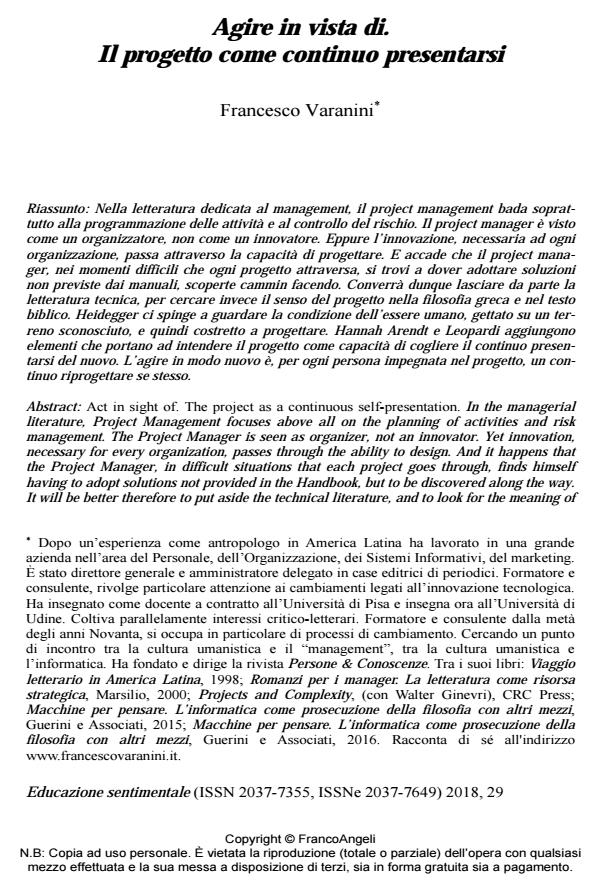Agire in vista di. Il progetto come continuo presentarsi
Journal title EDUCAZIONE SENTIMENTALE
Author/s Francesco Varanini
Publishing Year 2018 Issue 2018/29
Language Italian Pages 28 P. 124-151 File size 295 KB
DOI 10.3280/EDS2018-029011
DOI is like a bar code for intellectual property: to have more infomation
click here
Below, you can see the article first page
If you want to buy this article in PDF format, you can do it, following the instructions to buy download credits

FrancoAngeli is member of Publishers International Linking Association, Inc (PILA), a not-for-profit association which run the CrossRef service enabling links to and from online scholarly content.
Act in sight of. The project as a continuous self-presentation. In the managerial literature, Project Management focuses above all on the planning of activities and risk management. The Project Manager is seen as organizer, not an innovator. Yet innovation, necessary for every organization, passes through the ability to design. And it happens that the Project Manager, in difficult situations that each project goes through, finds himself having to adopt solutions not provided in the Handbook, but to be discovered along the way. It will be better therefore to put aside the technical literature, and to look for the meaning of the project in the Greek philosophy and in the biblical text. Heidegger urge us to look at the condition of the human being thrown on an unknown ground, and so forced to project. Hannah Arendt and Leopardi add reasons for conceiving the project as the ability to grasp the continuous appearing of the new. Acting in a new way is, for every person engaged in the project, a continuous redesign itself
Keywords: Alétheia, anxiety, accountability, agile design, Arendt, complexity, contingency, design, emergent interpretation, disclosedness, extreme programming, philosophy, future, Geworfenheit, Heidegger, Leopardi, management, present, project management, project, responsibility, resoluteness, self-projection, thrownness.
Francesco Varanini, Agire in vista di. Il progetto come continuo presentarsi in "EDUCAZIONE SENTIMENTALE" 29/2018, pp 124-151, DOI: 10.3280/EDS2018-029011